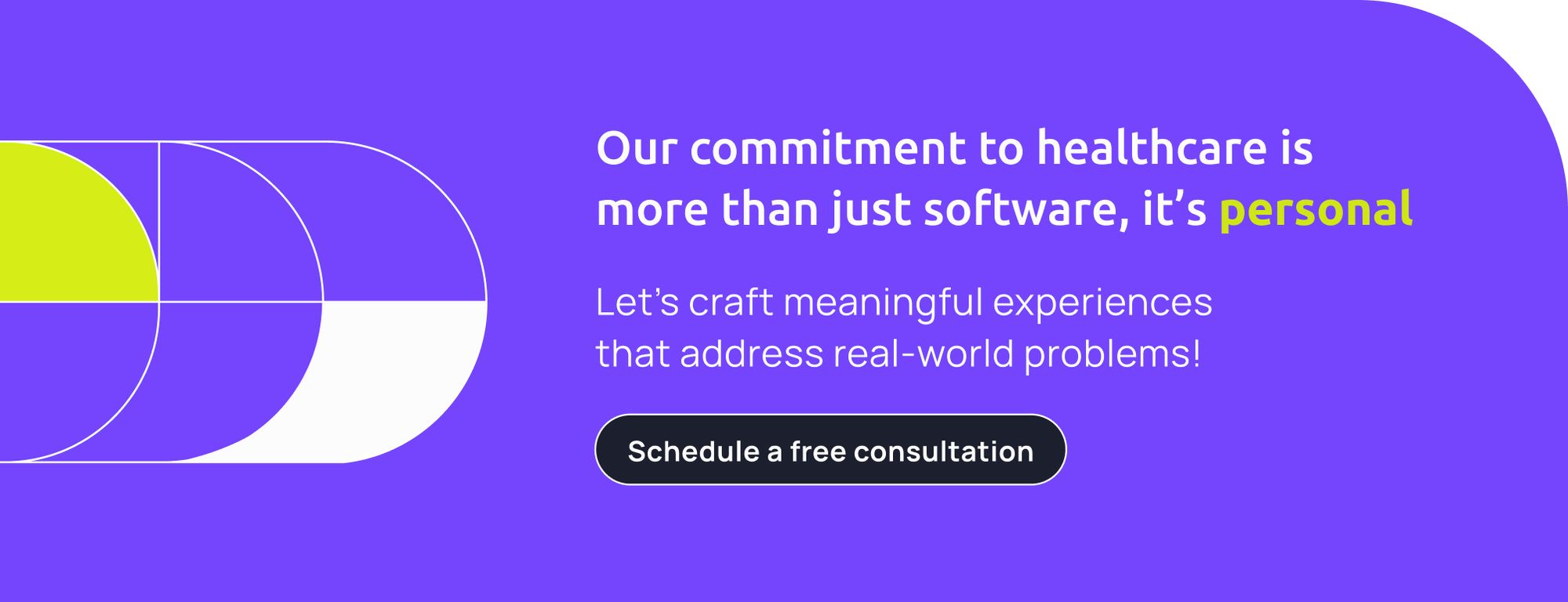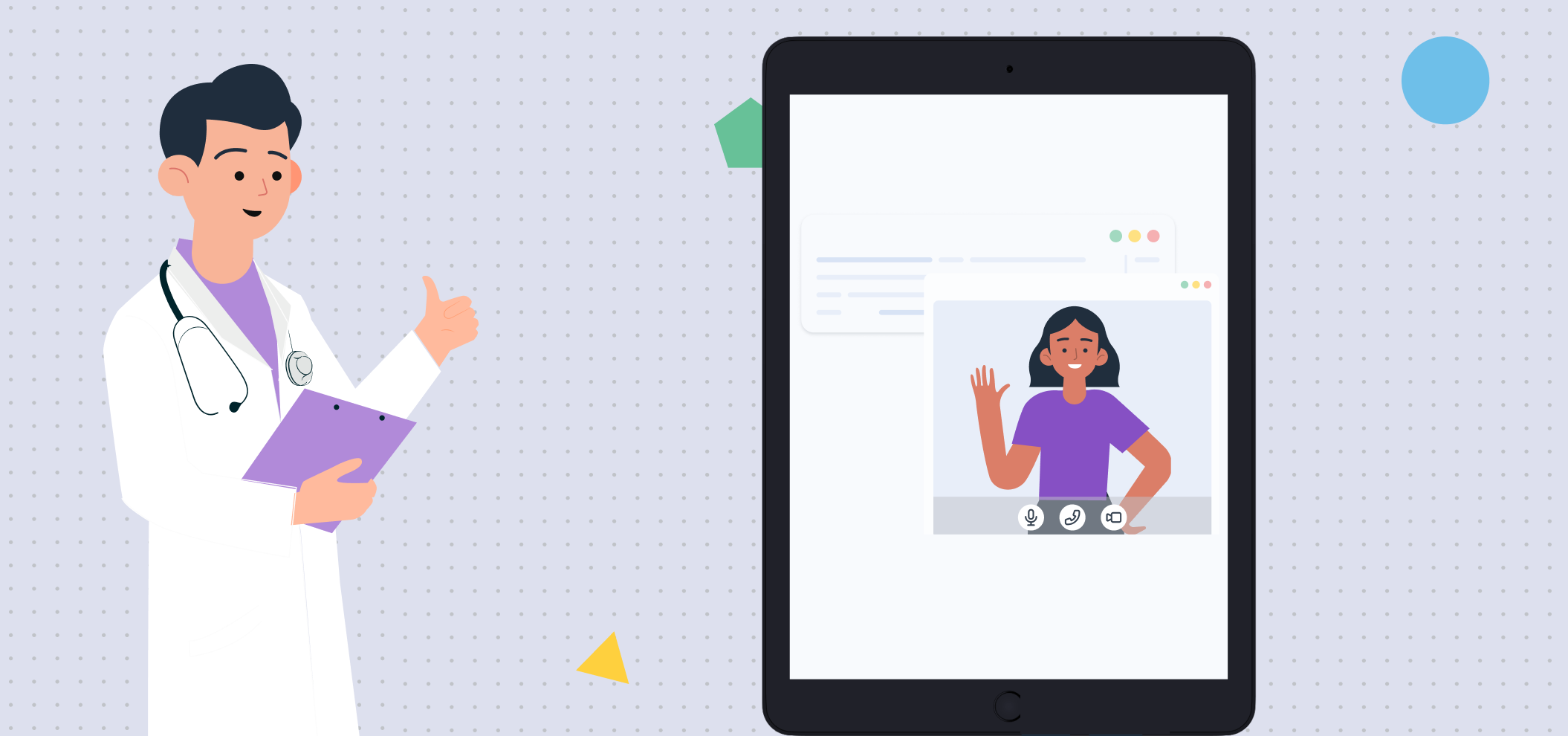Technological advances have always leveraged the healthcare industry, and the digital era is undoubtedly not an exception. Given the general global need to have real-time data and solve problems and tasks in just a few clicks, it’s more important than ever to count on reliable technology that improves the patient and medical providers’ experience, ensures effective medical processes and diminishes risks as much as possible.
Especially after the pandemic, patients have increased their demand and use of digital practices regarding health issues, and companies need to evolve to meet their needs and wants successfully. Thus, using healthcare SaaS is an excellent solution to achieve that without facing a high economic cost.
Let’s start with the basics.
What is Software as a Service (SaaS)?
In simple terms, a SaaS is when a consumer uses a cloud service and pays the provider or owner of the service a license in exchange (subscription fee, or pay-as-you-go). The key here is to understand that the consumer does not use this service to generate another outcome since the final product is the cloud service itself. For example, an e-commerce isn’t a SaaS because the site is just an intermediary to generate the outcome of buying a product. On the other side, Netflix is a SaaS platforms as it operate as a cloud-based applications, and its final value is offered by literally using the platform.
Examples of SaaS
- Google Drive.
- Slack.
- Dropbox.
- Zoom.
- Hubspot.
- Canva.
- Adobe Creative Cloud.
- Trello.
- DocuSign.
How does this SaaS trend affect the healthcare industry?
Considering that all medical organizations are looking for ways to improve the quality of their services on budget and patients seek accurate and immediate responses while having an excellent patient experience, healthcare SaaS allows meeting both needs.
For example, thanks to healthcare SaaS, the medical staff and labs were able to manage the investigation of the Covid-19 vaccine during this pandemic as quickly as possible. Something that in the past might have taken years to approve or reject, thanks to healthcare SaaS, they could pass from stage 1 to 3 within months, In this case, experts conducted global clinical trials with millions of data points, allowing medical organizations to count on better medicine, increase their quality service, and improve patient care due to quicker responses and a better user experience.
Benefits of Healthcare SaaS
There are multiple benefits of healthcare SaaS, such as:
- Better patient engagement and medical provider experience.
- Easy to use interface.
- Clinical Documentation Improvement (CDI): Reduce the possibility of human error while documenting data.
- Flexibility.
- Making trails without endangering patient safety.
- Meet many patients’ needs simultaneously.
- Communication and collaboration improvement.
- Electronic Health Information Exchange (HIE): Better storage and accessibility of healthcare information with remote access and interconnectivity.
- Telehealth accessibility and other communication systems improvements.
- Resolving ongoing problems.
- Send automatic updates.
- Real-time updates.
- Cost-effective (it implies a low investment and returns a fast payback).
- Scalability of the data.
- Reduces extra hardware and time of complex activities (ex., upgrading software).
- Increase security and privacy of sensible Patient Health Information and clinical information systems.
Changes of the SaaS industry
In the past few years, the saas market in the healthcare industry has increased significantly, and by 2025, it’s expected to present a value of $64.7 billion. Nowadays, 67% of healthcare IT companies are running SaaS-based applications, and there is no doubt that this number will continue to increase.
This significant growth in healthcare software sales can be attributed to many factors, such as increasing prominent data analysts and the adoption of more health devices in societies (internet of things, IoT).
Likewise, another factor to consider is the changes in patients’ needs and wants driven by the tendency to get things done as quickly and straightforward as possible, without compromising quality. Technological advances have made consumers demand constant upgrades in their products and services, and companies must respond to survive. Now, patients are smart consumers who count on information online to compare and contrast services and make well-informed decisions. They require the latest updates, direct access, and immediate response in every aspect of their lives, including healthcare issues. For example, users don’t tolerate making time-consuming or complex steps to get their prescriptions, nor to schedule appointments, and least of all to get feedback from their doctors. Indeed, patients want the best in the least amount of time, and if they cannot find this in the healthcare institution they usually attend, they may easily consider changing it. This factor makes the healthcare industry highly demanding for businesses to operate. Hence, the importance of companies to build strategies to reinforce their customer loyalty and launch constant upgrades.
Also, the global pandemic played a massive role in this aspect since it boosted the digitalization of many businesses and forced them to adopt a much flexible, remote, and technological way of operating. Especially the healthcare industry… who dared to enter a hospital during COVID times?
Difficulties and solutions for implementing SaaS healthcare models
Still, it’s essential to consider that these trends aren’t easy to address. In the first place, SaaS healthcare models manage many data that must be completely safe and private. Thus, it needs to comply with several requirements such as HIPAA Compliance to operate correctly. This is cumbersome and time-consuming but completely necessary, so the best solution is to contact a trustworthy software agency that works with HIPAA Compliance.
Likewise, the difficulty of implementing SaaS healthcare models also falls on the need to train people to make efficient use of the SaaS facilities. Therefore, in those cases, businesses should offer clear guidance and support in the learning process and transition and a follow-up later on to update new practices. Also, they can count on cloud-based LMS, which allows professionals to educate themselves in this matter.
Additionally, patients should also present certain flexibility in adopting new technologies and trust that a SaaS healthcare company keeps all patient data safe.
Top 10 SaaS medical companies
According to LATKA (2020), the top 10 global health SaaS companies are:
- Perspecta.
- Practo.
- eClinicalWorks.
- Health Language, Inc.
- ExitCare.
- Tobii.
- Doctolib.
- Matrix Medical Network.
- PointClickCare.
- Homecare Homebase.
How to start a Healthcare SaaS Business?
Now that you know all the benefits and positive aspects of healthcare SaaS, you might be thinking of creating one. It’s essential to bear in mind that there is no straight line to success, companies can take different directions while implementing healthcare SaaS to their operations, and even there are healthcare SaaS startups that aren’t necessarily linked to a medical organization. Still, here are some guidelines that may help you organize yourself and make your business thrive!
- Validate your idea.
- Analyze the market.
- Define requirements and features.
- Design SaaS structure.
- Create a Financial Plan.
- Establish a road map for your operations.
- Determine the cloud based solutions with SaaS capabilities.
- Plan the development.
- State how you will be testing it.
- Create an MVP.
- Launch MVP.
- Follow-up to improve and add continuous value.
TIP: hiring a Digital Product Agency may be the safest and most practical way to do all of these and start a successful healthcare SaaS.

Healthcare SaaS Industry Trends
Some of the trends that may be expected to develop in this area are:
- Artificial intelligence
- Improve efforts to security & privacy
- Pay per use model
- Use multiple clouds
- Increase of API connections
The Future of Healthcare SaaS
An aspect to consider in this sense is that technology will continue to develop exponentially. Businesses will have to face the constant challenge of updating their operations and practices to compete in such dynamic markets while improving society’s health.
Also, the deployment time of HIPAA-compliant applications is expected to be reduced, and application delivery services are tending to unify.
Finally, a possible future scenario regarding healthcare SaaS might allow medicine to reach places where it’s not possible nowadays. Since professionals can communicate easily with their patients through remote calls, there are more possibilities to expand to other markets, remote locations and offer the same services at reasonable prices. This will definitely create a positive impact on a global scale and possibly change the scope of operations for various businesses, improving healthcare around the whole world.


